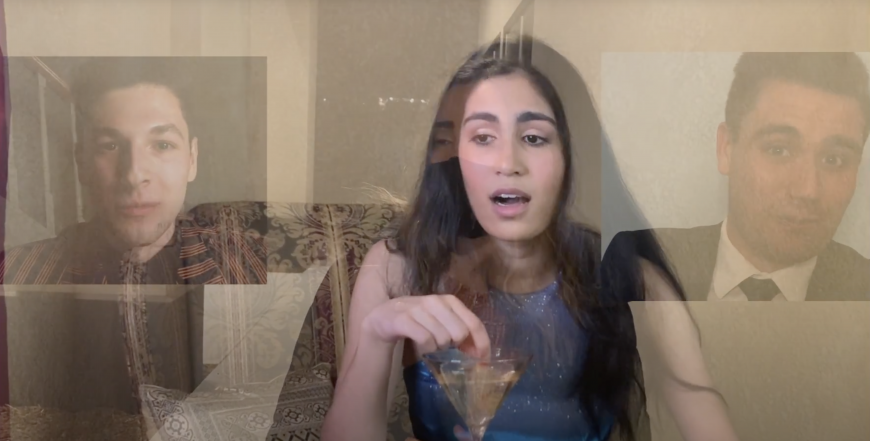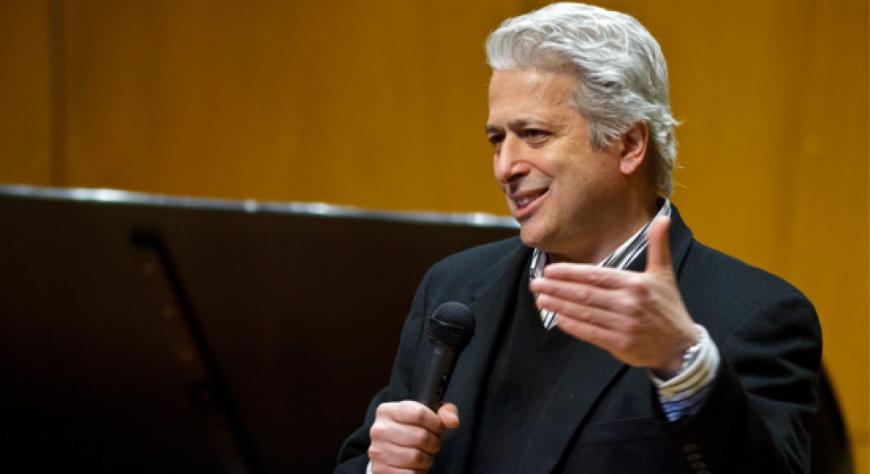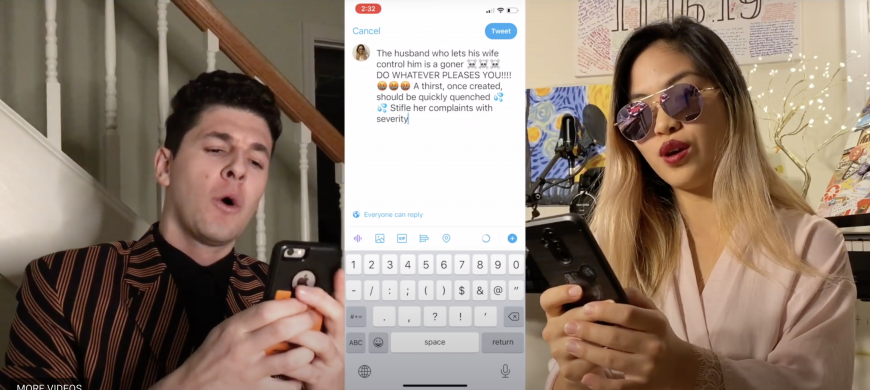
The wall between private world and public performance crumbled in La Calisto, a virtual opera filmed by Princeton University’s music department students in their homes, backyards, and bedrooms. It tells a story visually grounded in our present moment, as Calisto walks the street alone in Act I with a mask covering her nose and mouth, passing empty storefronts, while linking the tale to 1651 in Francesco Cavalli’s opera theme of unfeasible longing. Act III ends with a montage of still images and video from the cast of what they miss about prepandemic life, notably, a desire to be with friends and family.
“Let’s make this production about doing opera at this time,” said director Christopher Mattaliano. “We have to find a way to make this production resonate about life at this moment. What is it about this opera that speaks to us?”

Originally intended to be performed in front of an audience, like other 2020 events, the show was canceled. Then the team — conductor Michael Pratt with dramaturgy from department Chair Wendy Heller and Mattaliano as director — decided to go virtual. They discussed whether, given the circumstances, the opera should be literal and faithful to the text, or if it should be more conceptual and exploratory. Mattaliano recalls Pratt asking why they couldn’t have both. “What we wound up with is a production that doesn’t go too far in emphasizing the COVID-19 pandemic world that the singers are in, but uses it as a reference periodically.” Mattaliano, previously general director of Portland Opera, had directed La Calisto three other times: once in 2003, later at Portland Opera, and 17 years ago at Princeton, alongside Pratt.
Finding a video editor who understood what they were trying to accomplish was key. Mattalino worked closely with Chris McDonald, whom he described as a “superbly gifted editor who is also a musician” to stitch all of the scenes together.
Featuring a cast of 17 student vocalists and instrumentalists, the challenge of recording the footage and audio was real with students scattered across the globe, extending from Germany to Mexico and around the United States. The students were sent recording equipment, ring lights, and microphone stands for smart phones. As the students received audio music, they recorded their vocals. Then they would either lip sync while acting or sing while acting with those vocals stripped out later replaced by the separately recorded tracks. At times, Mattaliano would coach them as they performed, his audio cut out later in final edits. After filming had commenced, they settled into a routine of Zoom rehearsals, filming, and video editing footage provided by the students. Filming started in October and finished by the end of December.
The virtual opera was all shot by cell phone, most scenes filmed were hand-held. Mattaliano had been reading a book about Hollywood director Ken Russell (of Tommy and Lisztomania fame), who had left Hollywood and made homemade movies in his backyard. The book inspired him to champion that aesthetic for La Calisto.
“I said to the cast, ‘listen, we have to embrace the fact that everyone’s phone is going to be a little bit different. Someone might not be steady when they’re holding their phone and filming,’” said Mattaliano. “‘We have to embrace this, that it’s going to feel rough around the edges and I don’t want to get too caught up in making it look and feel perfect. I think we should embrace the fact that it’s going to have a very homemade feeling.’”
Building trust with the students was paramount for Mattaliano. He encouraged the cast to think creatively about finding props at home and choosing their own costumes. One student’s cat kept wandering into the scene, and they kept the footage as it fit her character. As he learned each singer’s style, Mattaliano could better suggest who should film the student, whether a parent or roommate, often filming a scene multiple times to get the right cut. Mattaliano describes working with cast members he had never met and getting to know them, along with their families and pets, as the most satisfying part of the process, saying, “I miss them terribly.”

Social media plays a peripheral role in La Calisto, and the cast offered insights on integrating the right platforms into the storyline. Tweets delivered a moral or an observation to the audience during pauses. Tinder became an online forum of seduction for characters like Calisto, who gets duped. When the character Giove is introduced, he is online, looking at a chart of “coronavirus around the world.” Act II introduces a phone text that stands in for unspoken dialogue. Is this the first opera production with emojis? Probably. The role of social media seems less strange than it might, because it ties into the characters’ longing to connect with others.
Based on the Calisto myth in Ovid’s The Metamorphoses, the Princeton music department’s performance of La Calisto is broken down into three acts, each released as a serial on separate Saturdays in March on the department’s YouTube channel. The three parts have a full run-time under 90 minutes. In order to truncate the opera for time, whole chunks of it were cut so Mattaliano wrote narration in collaboration with Heller to move the story along and keep to the spirit of the text.
Filming in private space for public consumption did one other thing too — it nudged the cast to engage with their roles differently. Mattaliano said that conductor Pratt, who has been at Princeton 25 years and knows these students well, would tell him how amazed and surprised by how loose some of the students were in their performances. Was there something about the minimal trappings of hair and makeup and distance by way of technology that reduced their inhibitions? Mattaliano was struck by the idea that anonymity in front of the cell phone somehow seemed to elicit deeper work from some of the students.
The ending you won’t see is Calisto gradually getting sick and then dying of COVID-19. This was one of two possible endings filmed for the opera. After discussions among Mattaliano, Heller, and Pratt, they opted for a more positive ending. Mattaliano recalls Pratt saying, “we are all dealing with this pandemic. Everyone’s dealing with death. Everyone knows someone that’s sick. I think at this point we would rather find something a little more hopeful.”
La Calisto premiered earlier this month and is available to view on the Princeton Music Department website free of charge, or you can see the segments embedded above.




